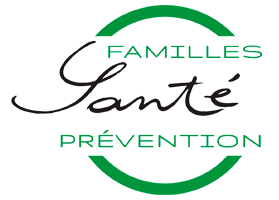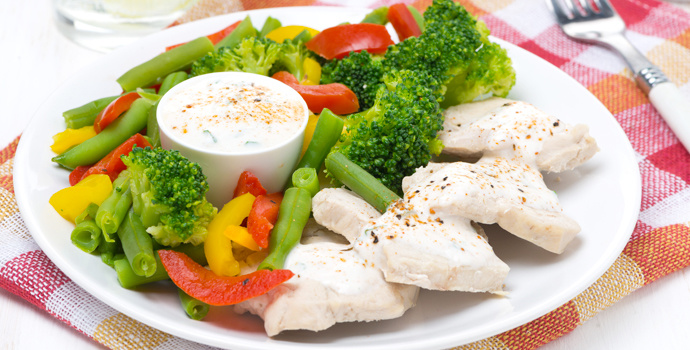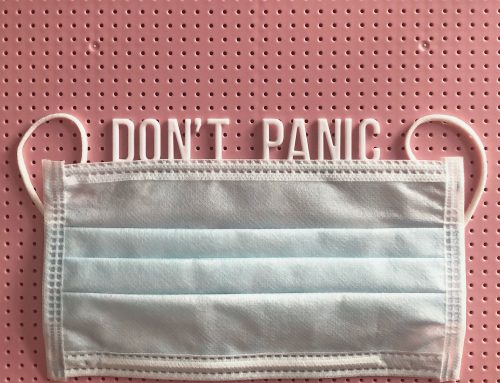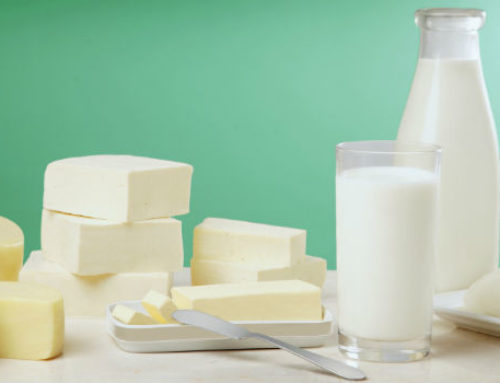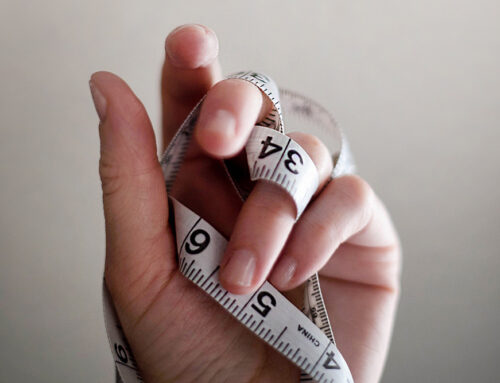Letter No 9 of the Professor Henri Joyeux – 13th of May 2014
This is one of the most frequently asked questions in my conferences. I am aware my responses are not complete, because I do not personally master the cooking practices. This is why I ask spouse to respond to this important question. For indeed, cooking your foods too much or badly will not only deteriorate the nutritional qualities of what you eat, but also disturb the digestion process and your body’s assimilation of nutrients by your intestinal tract.
Christine Bouguet-Joyeux (Nutritionist) published three books in French that take a close look to the topic of the optimal cooking method in a concrete manner.: “Le Guide pratique de Gastronomie familiale – l’Art et le plaisir pour la Santé“, ( Litterally A Practical Guide to Family Cooking – Art and Pleasure for Your Health), “Tout à la vapeur douce – 100 nouvelles recettes ” (“Everything Soft Steamed : 100 New Recipes”) and most recently an illustrated book meant for parents and children aged 4 to 12 to cook together: “Je cuisine en chantant pour ma Santé“, (Literally “With Maminie I Cook And Sing For My Health”, which includes a free CD of cooking songs and nursery rhymes).
Besides writing books, she also accompanies me in most of my conferences to explain all the practical aspects of good healthy nutrition.
I hence thank her warmly for such a generous help. Her expertise is what explains my good physical health and morale!
Professeur Henri Joyeux
What Can You Expect From an Ideal Cooking Method ?
The ideal cooking method is, without a doubt, soft steam cooking, which reaches a temperature no higher than 95/97°C i.e. 203-205 °F, a temperature below the boiling point. It has many underestimated advantages, and also has a bad reputation, often pointed to as “bland” or ”boiled”, which is obviously not the case.
Soft steam cooking is the only cooking method that is respectful of foods’ nutritional identity.
It is efficient, fast, protective of nutrients and it detoxifies foods from all toxic elements, additives and heavy metals that accumulate in foods because of current growing methods, environment pollution, and the food industry’s cooking and preservation methods.
Everything can be soft steam cooked : vegetables, legumes, cereals/grains, meats, fish, bread, cakes… Fruits can be as well, although they are always tastier raw: then, their nutrients remain intact and are better assimilated.
However, it is very important to be watchful of the cooking time, because the longer something is cooked, even steamed, the less vitamins in the foods and the more degraded the nutrients. Cooking right is cooking a short time, which conflicts with the food industry’s sterilizing methods, mass catering and the “chain of heat”. If you keep foods at 63°C or 143°F – well under the boiling point – for hours, most nutrients will be destroyed.
The Food’s Nutritional Identity: Their Color, Smell, Flavor and Texture
The color of vitamins, the smell of aromatic molecules, the flavor of minerals and the texture of fibers reflect the nutritional qualities of foods. Such qualities must remain as natural as possible to nourish us appropriately and be well assimilated. We should avoid degrading them through cooking.
Beware of Overcooking!
All nutrients that are transformed through cooking disturb the digestion process and bowel functions, induce digestive difficulties, and in the long term could lead to metabolic diseases while reducing immune defenses. In the long run, it could be even more serious: hence the longer we cook, the less we bear eating raw fruits and vegetables, which are the only foods capable of restoring health to our sick gut.
The “Steam Cooker” Uncovers the Best Qualities of the Foods We Want to Cook
Soft steam cooking consists in cooking foods in a sort of couscous-maker-style steamer, which consists of a bottom large pot (for the water), a single level basket with large holes (5-7 mm or 0.2-0.275 in) and a domed top. The bottom pot is filled up with a large amount of water. After heating, the water in the bottom pot will boil and start steaming. The steam rises through the holes, circles between the basket and the rounded top and penetrate the foods. The extra steam will have enough room to escape by lifting the top, since it is not forcefully shut by a closing mechanism as in most pressure cookers. The steam, softly turning between the basket and the rounded top, will make foods sweat out allergens, toxins and cook it very quickly.
The best cooking pot to this day is the one designed by French engineer André Cocard in the 1980s, based on some Asian and south Mediterranean models. Cocard had named it Vap’OK. I knew this man very well. He was a prolific engineer who owned many patents. He worked for a year in my husbands’ lab and often visited our home. He convinced us quickly of the benefits of this method and taught us a wealth of knowledge.
Currently, two French steam-cooking brands fit Cocard’s health-enhancing engineering specifications : the “Vitaliseur” and the new Vapok. Nowadays, the soft steam cooker is most famous under the name “Vitaliseur”.
For an improved efficiency, one should, as Chinese know very well, cut vegetables in small pieces, spread them in the basket, put the round-shape cover on top, reopen and mix, and take them out when they are just cooked, still crunchy and colorful, “al dente” as Italians would say. Most of the time 5 minutes suffice. Cooking finishes inside the foods through the accumulation of heat by the steam inside, and outside of the steam cooker, while you season them before eating.
The Temperature-Time Equation
It is very important to respect the temperature-time equation for cooking times. One can cook most foods in 5 minutes: vegetables, precut meats and poultry, legumes after having soaked them overnight (which starts the sprouting process and enriches them with vitamins and plant hormones or “phytohormones”).
However, cereals and grains will need longer, cooking in water in a stainless-steel bowl in the steam cooker. Plan on one volume of whole grain rice for example, or buckwheat. You should add one volume and half of water in the bowl (in short, 1 cup of rice for 1 ½ cup of water). In the case of quinoa, which should be rinsed three times to eliminate allergens, one needs 1 volume and ¾ of water over the seeds. For millet, one needs two volumes of water for one volume of grain. Amaranth needs one volume of water for one volume of seeds. Except for the case of Amaranth, which doesn’t need as long a cooking time (about 15 minutes), most grains need 20 to 25 min in the steam cooker depending on quantity. Results are astonishing : rice does not stick and the grains are perfectly and uniformly cooked, even in the case of whole grain rice.
To cook fish, lower the fire as much as possible, and take it out of the steam cooker as soon as it gets white and starts to break apart.
Bread or cakes can be cooked in twenty to thirty minutes depending on volume and thickness. They usually are very soft, light and easy to digest, especially if you replace butter with extra virgin olive oil and use flours low in gluten content.
Final results are highly convincing. All foods aromas are preserved and merge together as one mixes and seasons different ingredients in a pot with grey sea salt, extra virgin olive oils, herbs and spices. Note, the foods that we mix in an approximately 4-inches deep pot we do not re-cook:ingredients are only combined, mixed and seasoned. Then we cover them and allow them to meld together for five minutes before serving. The resulting flavors will be more refined, more delicate. This is a true cooking art that stimulates and restores our senses, doesn’t weight on our digestive process, gives the pleasure of creating flavorful and naturally colorful meals, and encourages us to savor it with a recovered and renewed “Castle of Flavors” i.e. the reawakened taste buds of our mouth !
I wish you bon appétit and good health!
Christine Bouguet-Joyeux
La Lettre du Professeur Joyeux is an independent and free information service est un service. It specializes providing the wider public and families with disease prevention information. Click here to subscribe to the letter.
This health advice is provided free of charge by this organization and cannot be considered as personal medical advice. No treatment should be initiated solely on the basis of this content. It is strongly advised to consult a properly licensed health professional to seek responses with regard to one’s health and well-being. No information or product mentioned on this website is meant to diagnose, treat, atone or cure a disease.
You have a Personal Health Question ? ( Confidential response) or you wish to enjoy our exclusive services?
Become an exclusive member of our association for one year by clicking HERE.
